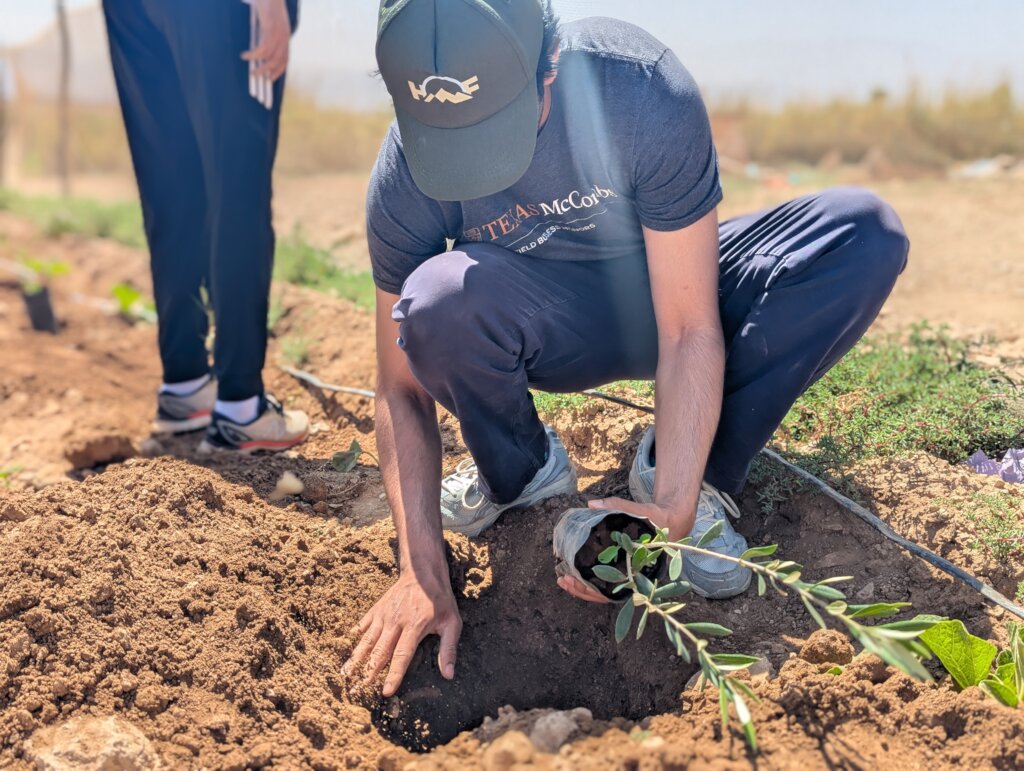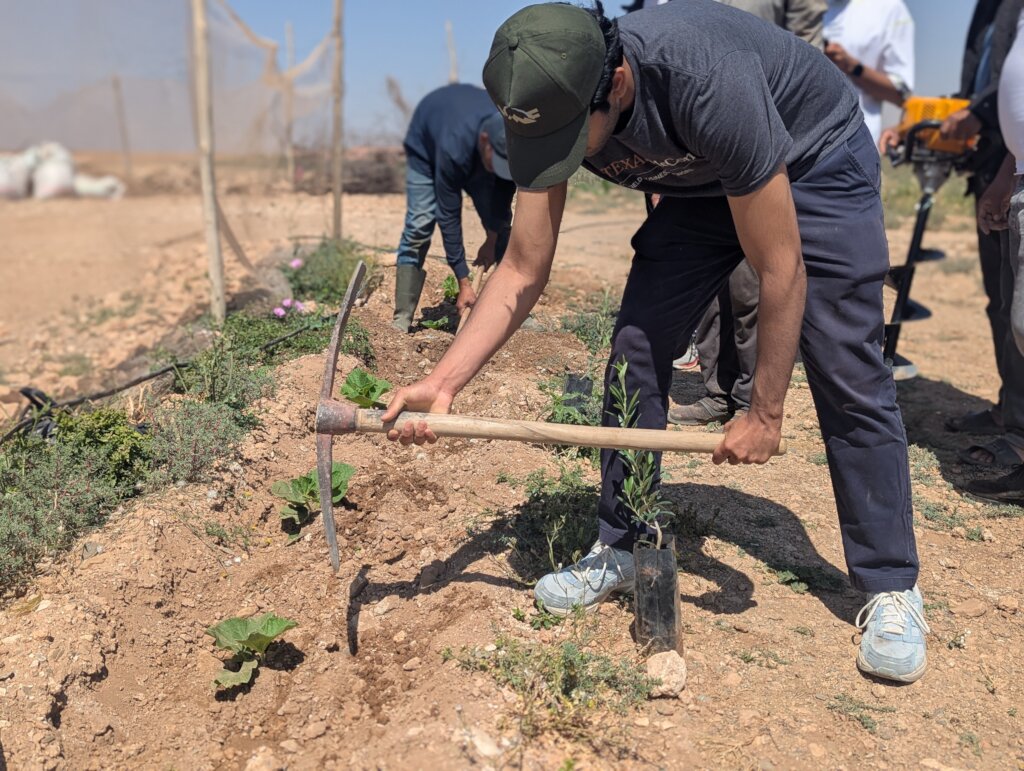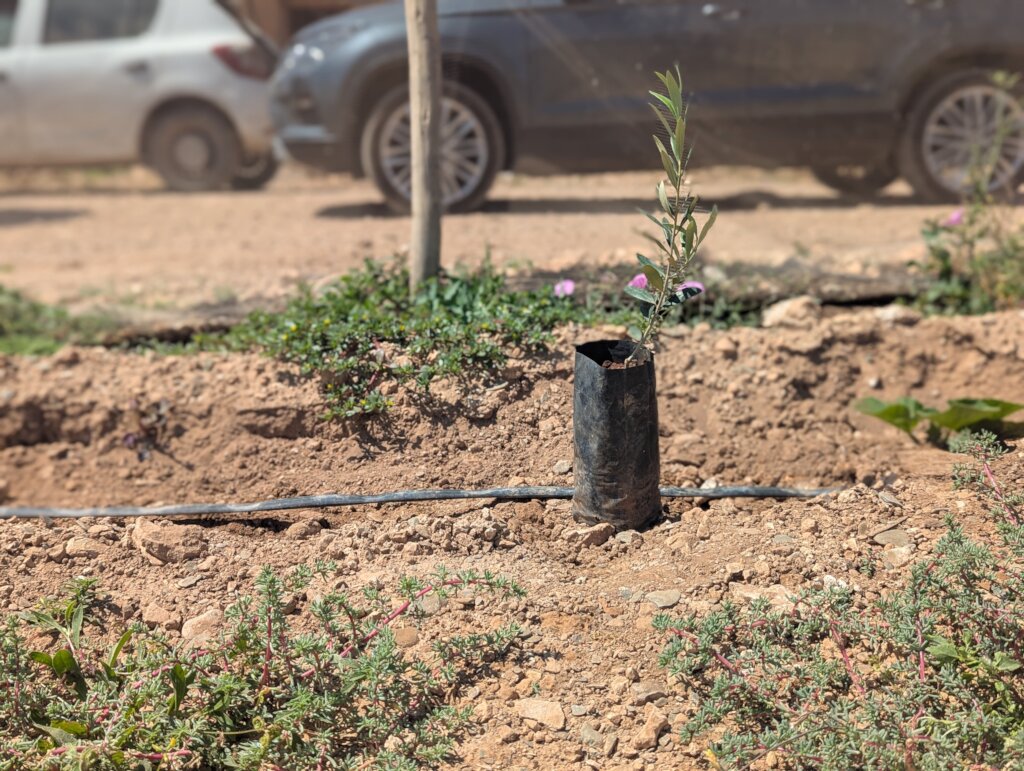By Ansh Jakatimath | HAF Intern
On June 12th, I ‘planted’ my first tree! Pairing up alongside Hanane and Abdeljalil from the High Atlas Foundation and three employees from InDrive, we all made our travels to Sidi Badhaj in the beaming summer sun to witness the step-by-step, incremental process of planting a single tree.
Seeing extravagant numbers like 75,000 or 100,000 trees on a brochure or pamphlet has a palpable numbing effect that makes us dismiss how intricate and effortful the process of planting even a single tree may actually be.
In reality, one must survey land, mark potential locations, manually dig holes, and only then does the thought of planting a tree even arise.
Meanwhile, hundreds of kilometers away, the sapling nursery is in bloom. Nursery attendants manage the hyper specific temperature or growth conditions in order to sprout year old saplings that can then be transported to fields for planting.
For us, ‘planting a tree’ simply means taking that prepackaged sapling that has been nurtured for several months and carefully wrapped for transport, ripping it out of its bag, and then carefully placing it into the hole that has been dug. The funny thing being that after doing such a simple task a dozen times, one starts to think “wow, there are still a dozen more till the end of this line.”
Our singular step is representative of the absolute middle of the tree planting process. Even after the sapling has been placed into the ground, the work remains vastly unfinished. Caretaking and management for months on end mark the life cycle of that sapling into an actual tree.
That process from the nursery, to the fields, and eventually the growth of a full-fledged tree marks the addition that ultimately sums those quantities in the tens and hundreds of thousands that we have become accustomed to.
While we took our rest, being lured by the offer of biscuits and tea, the field’s farmers, far more effective in their approach, continued. As we relaxed, the time between conversations primarily held in Darija offered me some time to reflect on this process and its sheer magnitude.
Each sapling requires such care and attention. Each tree only compounds upon that effect. The work is the mesh of artisanship and manual labor that takes in complex conditions and generates visible environmental impact en masse.
The vision of the green future of Morocco is only made possible by such work, and the High Atlas Foundation is at the forefront of it.
Through offering students like myself and corporate partners opportunities to be a part of (a generously estimated) one percent of the process, those enormous numbers we too quickly look past are made even greater in their significance and magnitude.
For me, in becoming part of that mere one percent, my attention for the true work that goes into a single plant has grown inexplicably. And for those, that after reading my account still may not believe me, I would advise them: “go ‘plant’ a tree!”
Ansh Jakatimath is a senior at the University of Pennsylvania. He has been interning with the High Atlas Foundation for the past year.
Project reports on GlobalGiving are posted directly to globalgiving.org by Project Leaders as they are completed, generally every 3-4 months. To protect the integrity of these documents, GlobalGiving does not alter them; therefore you may find some language or formatting issues.
If you donate to this project or have donated to this project, you can receive an email when this project posts a report. You can also subscribe for reports without donating.
Support this important cause by creating a personalized fundraising page.
Start a Fundraiser

